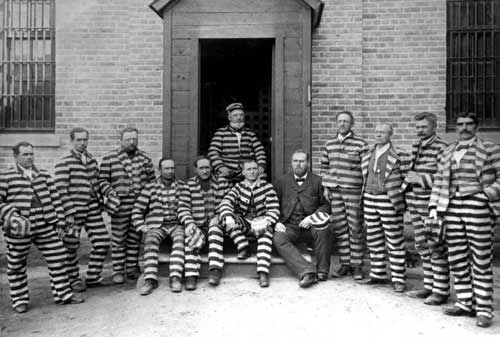When members of the Church of Jesus Christ of Latter-day Saints (LDS) arrived in Utah in 1847, some of its leading members practiced polygamy, a family in which one man has more than one wife.
In Short
Other Americans did not widely know that members of the Church of Jesus Christ of Latter-day Saints (sometimes known as Mormons or LDS) practiced polygamy until 1852. That year church leaders acknowledged that some of their people were in polygamous marriages. Many Americans did not support the marriage practice. They wanted to stop polygamy.
LDS leaders and other members wanted Utah to become a state. However, the federal government denied statehood status for almost fifty years. Polygamy was one reason that Utah was not allowed to become a state. In fact, Utah did not become a state until six years after the LDS church announced that members would stop new polygamous marriages.
More of the Story
LDS church leaders promoted polygamy, and many members believed in the practice as a part of their faith. But many people across the country, including some within the LDS church, did not support the practice of polygamy for a number of reasons. People across the country claimed that the marriage practice oppressed women and/or was immoral. For many years, people across the United States worked to end polygamy using legal and many other tactics.
Different views of polygamy.
Over time, the US Congress passed several laws that aimed to end the practice:
- The Morrill Anti-Bigamy Act of 1862 prohibited polygamy in the territories. It also limited the value of the land that the LDS church could own, among other things.
- The Poland Act of 1874 took away the LDS church’s power over the territory’s justice system.
- The Edmunds Act of 1882 made polygamy a felony, prohibited “unlawful cohabitation,” and took away polygamists’ right to vote and hold political office.
- The Edmunds-Tucker Act of 1887 disincorporated the LDS church, allowed the government to seize church assets, punished offenders with large fines and prison, required wives to testify against husbands, and more.

Federal marshals arrested many LDS men who spent time in prison. Other polygamists went into hiding, including church president John Taylor. In addition to making polygamy a federal crime, these laws threatened to bankrupt the LDS church.
LDS church leaders decide to change policy.
In 1890 the US Supreme Court ruled that the federal government could seize church property—including temples. Church president Wilford Woodruff had to make a change, so he issued a statement advising members not to take part in any illegal marriages, which meant polygamy. This statement was called the Manifesto.
The Manifesto put the rest of the country at ease, and allowed Utah to move forward toward statehood.
Saying it more clearly.
For church members, the Manifesto was not very clear about those people who were in a polygamous marriages. People also continued to enter into church-supported polygamous marriages until the early 1900s.
People across the United States, including elected officials, learned that polygamy continued after the Manifesto. In response, the US Senate refused to seat Reed Smoot, a church apostle elected as a senator by Utahns. The long debate over Smoot was big news all over the country.
In 1904, church president Joseph F. Smith issued a more specific and binding decree about polygamy. The decree stated that anyone caught entering or performing a plural marriage after 1904 would be excommunicated from the church.
Polygamy is still practiced in Utah and elsewhere in the United States and Mexico. People who chose to create polygamous unions chose to leave the official LDS church to organize other sects. This includes the Fundamentalist Church of Jesus Christ of Latter-day Saints or FLDS church.
Keep Exploring!
Return to the Immigration and Expansion page here.
Return to the I love Utah History home page here.